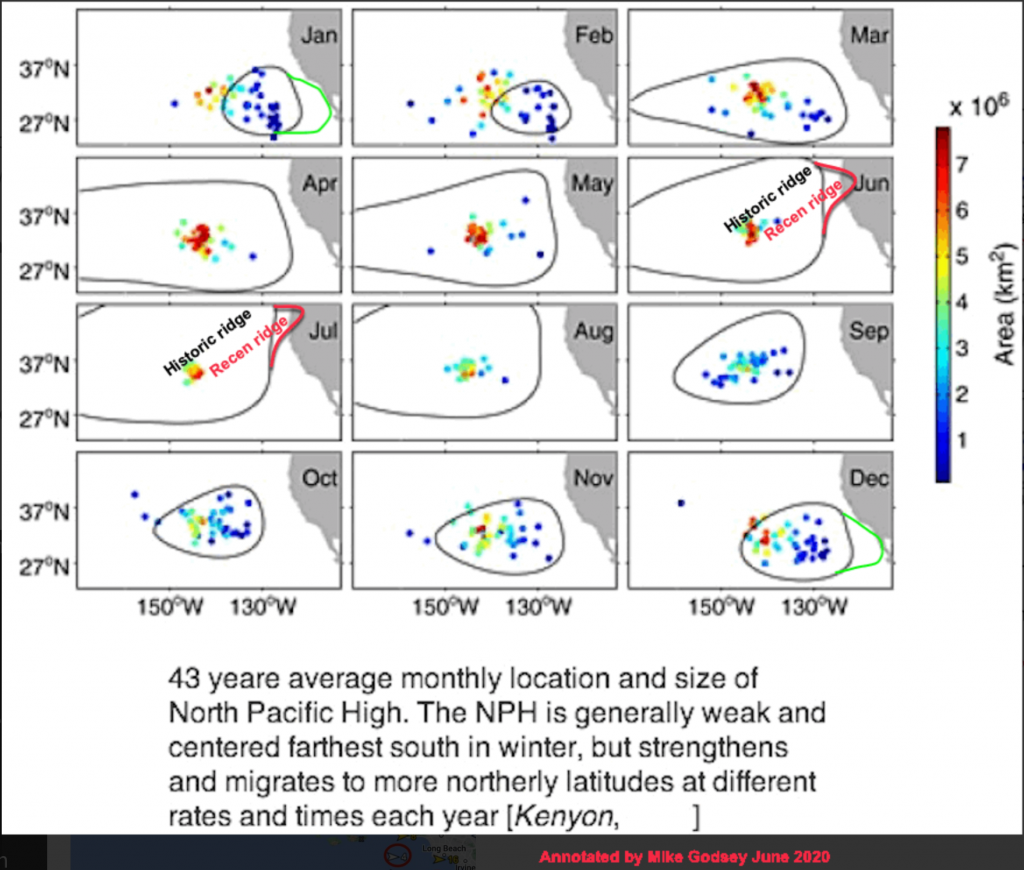Ask anyone who wings, kites or windsurfs the west coast from The Gorge to Los Barriles to Hawaii and they will heard of the North Pacific High.
This dome of high pressure spans much of the Pacific and changes shape, location and size daily and seasonally. This brings trade winds Hawaii, NW clearing winds to the San Francisco Bay Area and Southern California, NW winds to Baja’s Pacific side from San Quintin, Baja Norte to Abreojos, Baja Sur while the NPH turbocharges the crazy strong winds of the Columbia River Gorge. And of course to La Ventana, El Sargento and Los Barriles on the Sea of Cortez’s Baja’s East Cape.
But it is very do all these venues blow at the same time. This is due to fairly reliable seasonal changes in the North Pacific High. This graphic shows the average shape, location and size of the North Pacific High over 43 years. In recent decades the the North Pacific High has become far more variable due to climate change and the increased frequency of La Niña and El Nino events. Plus the NPH has become more prone to extending a ridge, indicated by RED ridge in this diagram, into far Northern California and the Pacific Northwest impacting the winds in that area.
If you ply the waters of the Gorge, San Francisco or Southern California it seems like the North Pacific High disappears in the winter.
But in reality, it just shrinks and move closer to Baja in the winter.
The North Pacific High is normally not the major winter wind maker for Baja’s East Cape. But in recent decades it often moves closer to Baja as indicated by the Green Ridge in the diagram.
If the North Pacific High’s surface NW winds are weak near the Pacific side of Baja Sur some of this NW winds may filter through arroyos to Baja’s East Cape where it appears as random gusts of WNW winds that push the North wind away from shore, especially at El Sargento and sometimes La Ventana.
If the North Pacific High’s surface NW winds are strong near the Baja pacific coast they can combine with El Norte winds from the USA’s Great Basin to create strong gusty winds on Baja’s East Cape.
This frequently happened during the epic 2022-2023 winter and also on November 2, 2022


